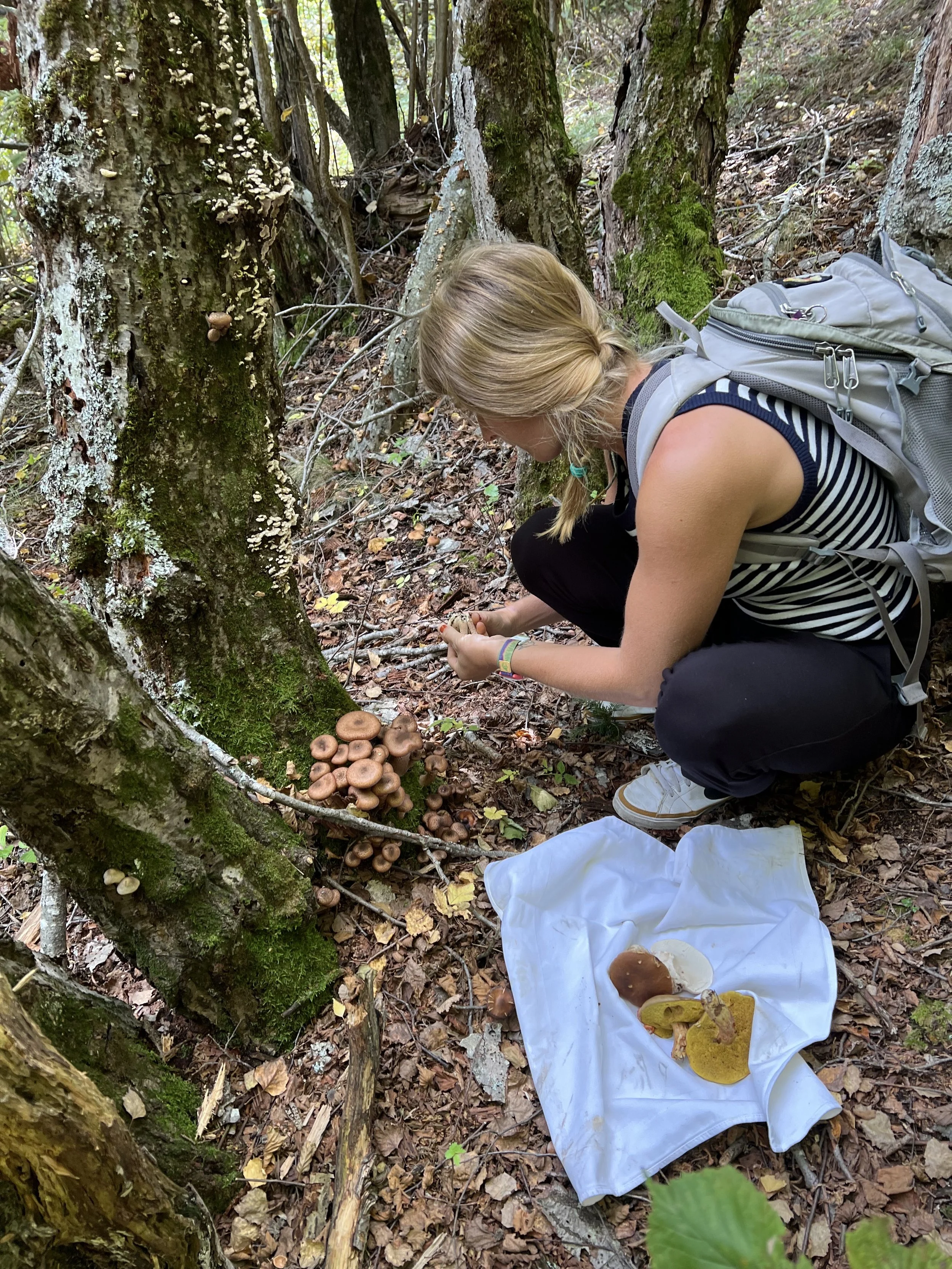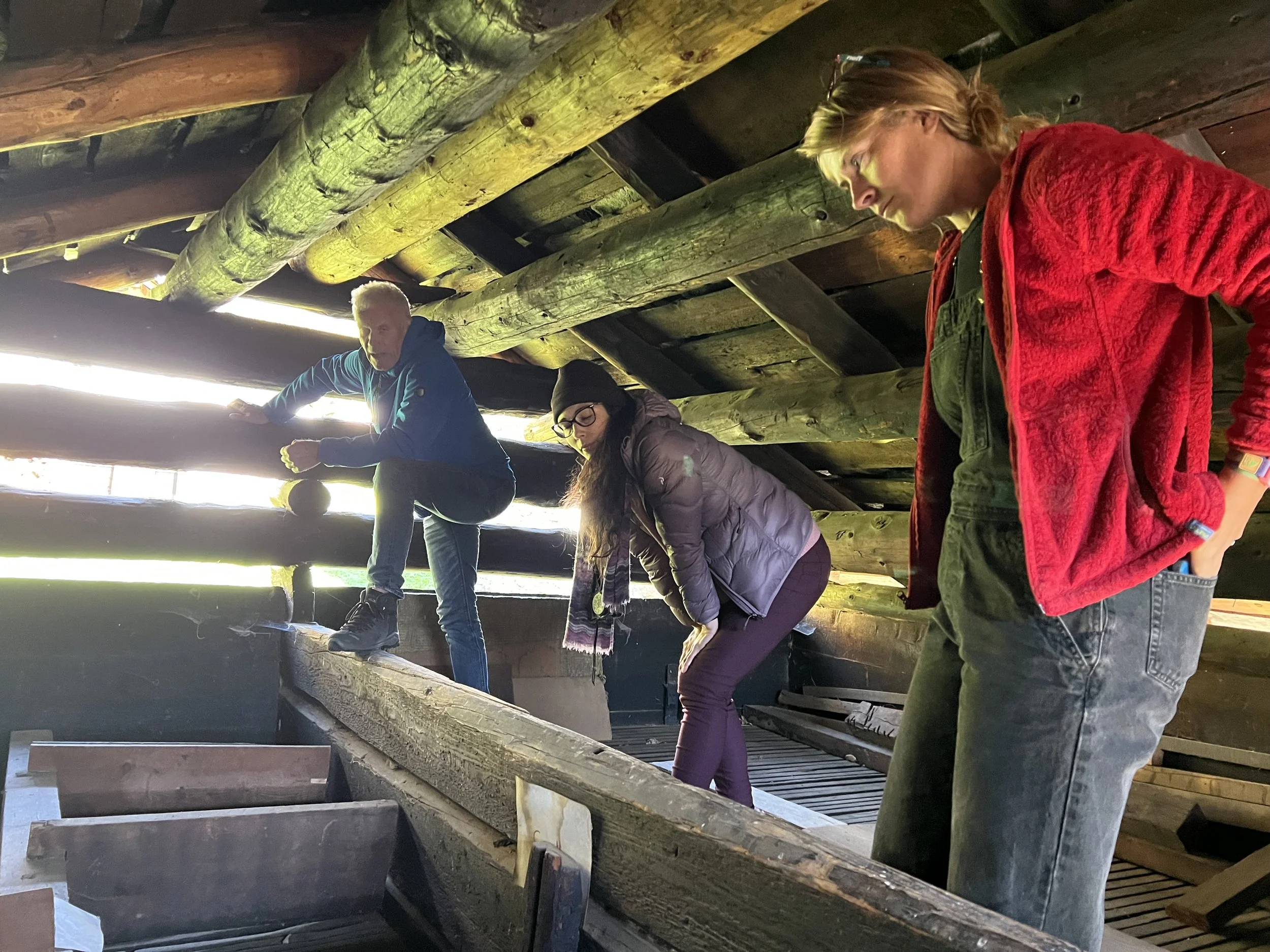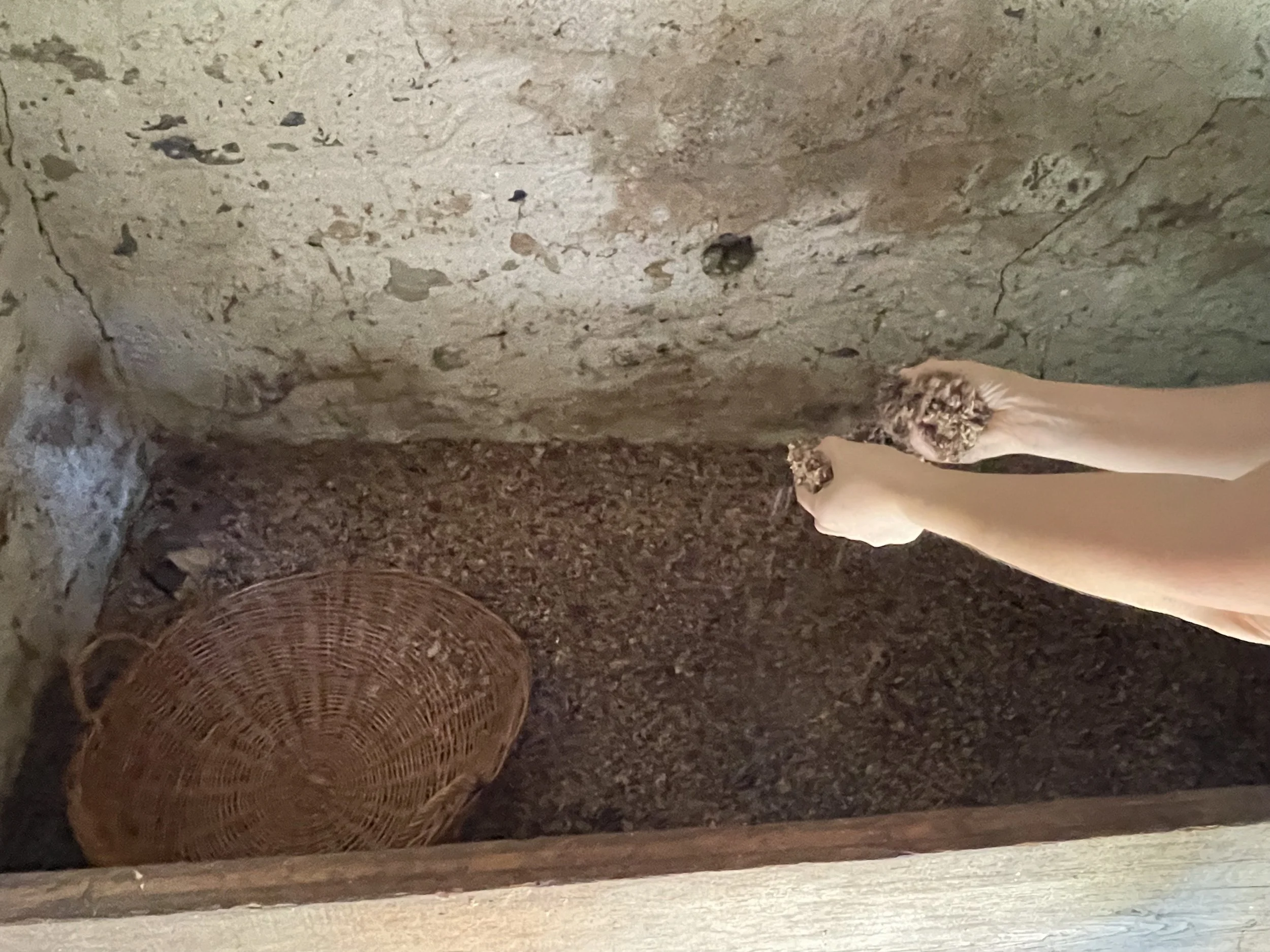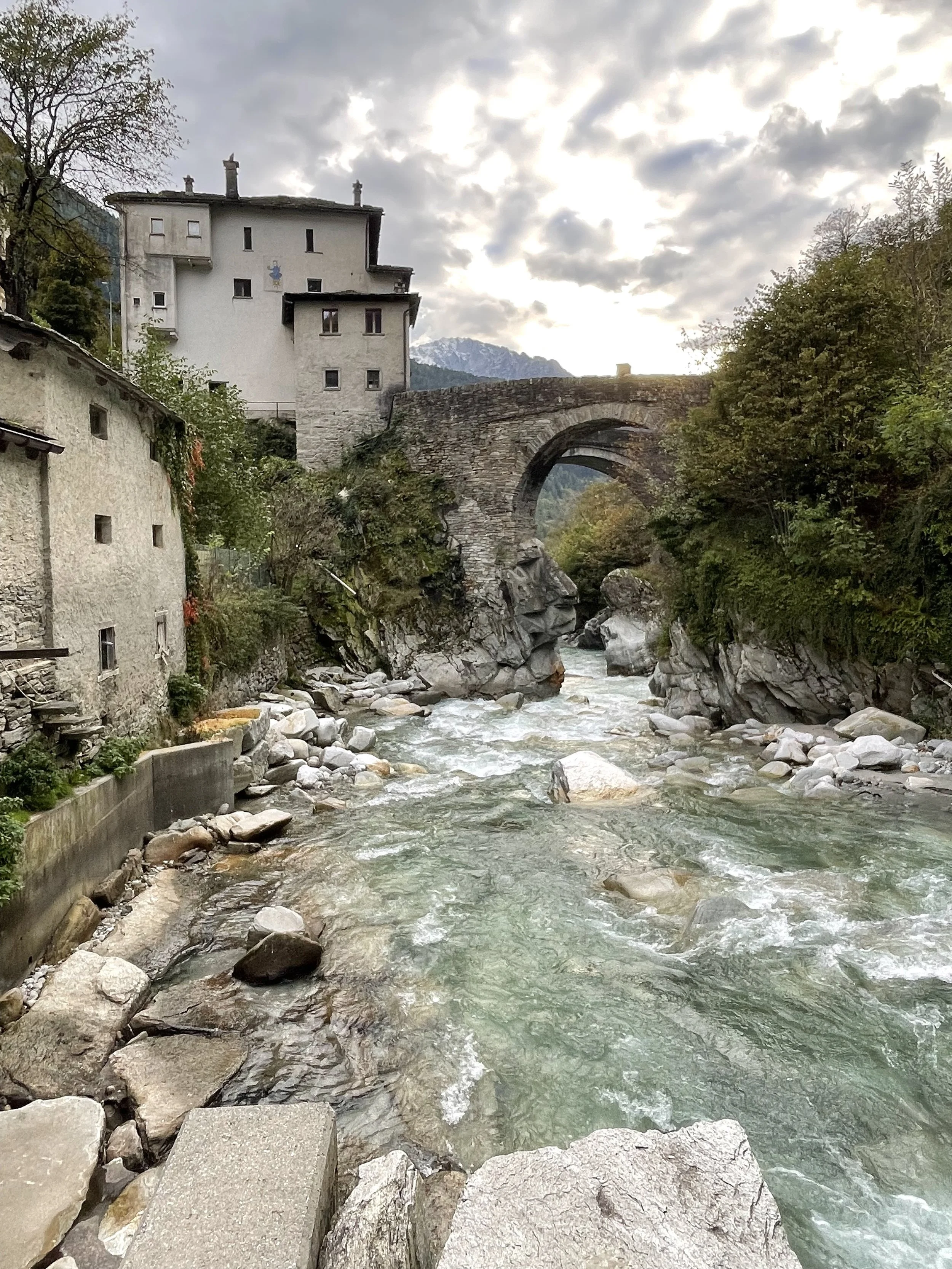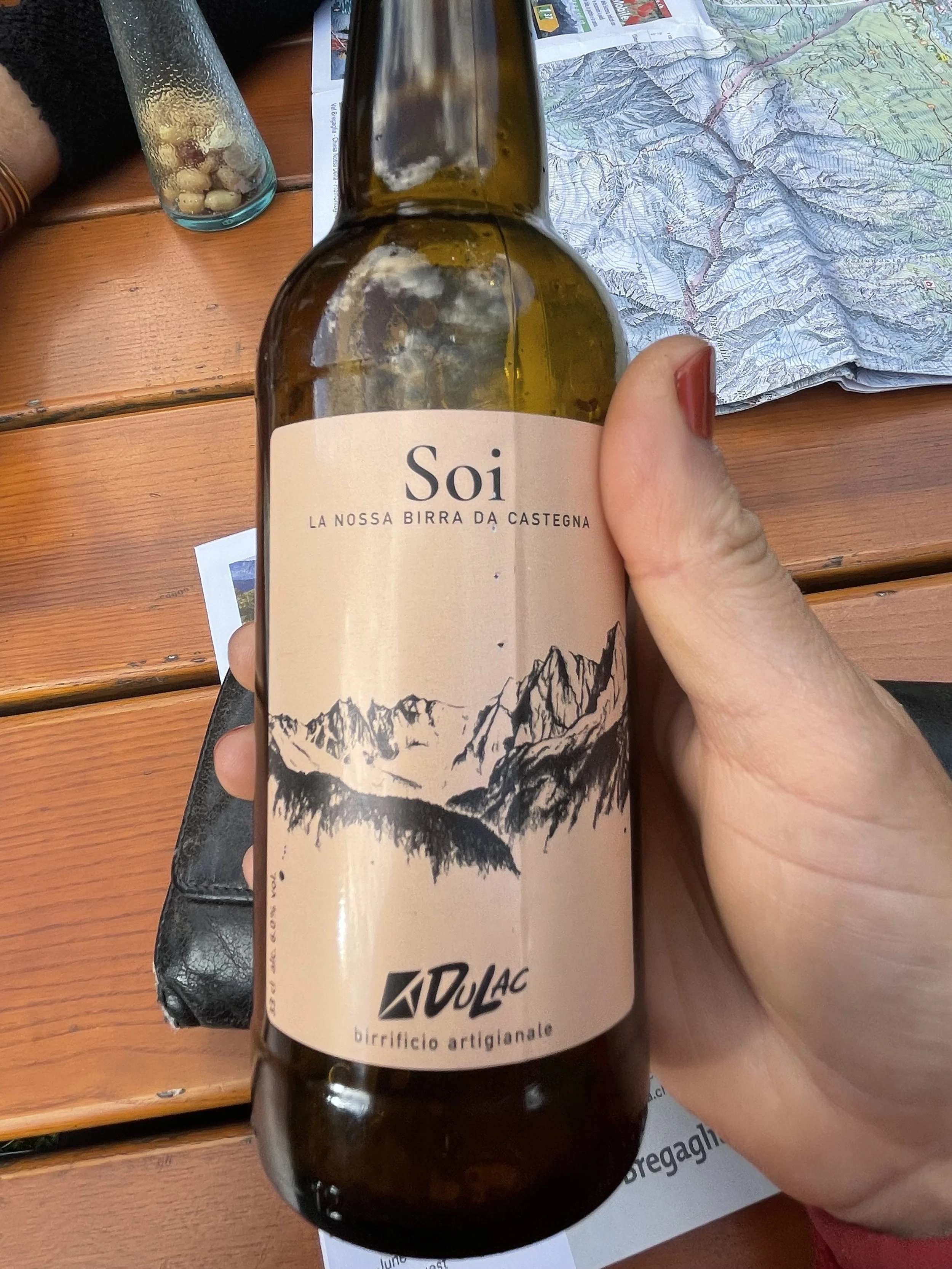Swiss Chestnut Processing
Me, tromping the woods hunting for mushrooms with my friend Catherine in the Swiss Bregaglia.
In what feels like ages ago but was in fact last month, I had the immense pleasure of spending two and a half weeks traveling around Europe. If you know me at all, you know that I am a diehard homebody and not particularly partial to global touring. And yet! Since my first real adult visit to Europe in 2019—a trip when I first saw tree crop culture first hand in the Swiss/Italian Bergell Valley (so many firsts!)—I’ve been wanting to go back. I’ve spent the past five years learning more from afar, corresponding via email with a Swiss chestnut grower named Manuela Filli. Manuela is about my age and the president of the local chestnut growers association, and as soon as we started chatting, I knew we’d be long term pen pals.
The Bergell Valley or Bregaglia is on the border of Switzerland and Italy, and the place names and languages are a mishmash of Swiss German and Italian. The town where Manuela lives is called Bondo, and like all the other towns in Bregaglia, it’s centered on the Mera River. The Mera threads the bottom of the long, thin valley with a clear, rocky ribbon of water lined on either side with snow-capped, 12,000 foot peaks. It is, shall we say, not exactly a place where row crop agriculture is likely thrive. Locals say the Romans brought the chestnut trees about two thousand years ago, and their wooded descendants are still here: younger specimens and shifting cultivars, but a steady chestnut presence in the lower elevations.
From left to right: the Swiss village of Soglio from an alpine path; the chestnut trees of Castasegna, which neighbors Bondo; a chestnut processing hut or cascine; ripe burs on a tree in Castasegna
The trees are the staple crop of Bondo and the surrounding towns: a crop that feeds people and livestock and wildlife in equal measure. Catherine and I met a hunter coming down from the chestnut forest at dusk on our first day hiking around the village, and he said he’d struck out that afternoon but earlier in the season had bagged two deer and one chamois (a creature also known as a suede, which sort of looks like a cross between an antelope and a goat). Earlier we’d visited the local flour mill, where the millers ground chestnuts into flour using the power of the river, and later we went to dinner at a local restaurant where the tasting menu was almost entirely made up of dishes created from some derivation of chestnuts: either the nuts themselves, the animals they fed, or the other species they helped grow in the forest. It was, for this nut lover, utterly dreamy.
A few chestnut-themed menu items:
Fresh goat’s milk cheese with chestnut honey
Chestnut ravioli stuffed with alpine cheese and red chicory (pictured, right)
Chestnut gnocchi with smoked speck
Cappelletti filled with pheasant and chestnuts
Deer filet with mountain herbs and caramelized chestnuts
Chamois Salmi with vegetables and caramelized chestnut
Dessert:
“Castanamisu,” a chestnut-laced tiramisu
Chestnut Catalan Cream
Chestnut Cake
Chestnut vermicelles with vanilla ice cream, whipped cream and meringues
On day two we walked 11 miles through the mountains, collecting mushrooms and filling our pockets with chestnuts and stopping toward the end when our feet began to ache to refresh ourselves with some salty nuts and a chestnut beer. It was kind of unbelievable how many foods and drinks featured chestnuts, even though I went in knowing full well that they are a staple crop here and that they’ve been part of the cuisine for thousands of years.
Finally on day three I got to meet Manuela, and after five years of pen-palling we spent the afternoon real-life-palling around at a chestnut processing demonstration. Held in the village of Castasegna (which translates roughly as chestnut grove), the demonstration was organized by Manuela and other members of the local castanicoltori. And thanks to Catherine and Manuela translating, I was able to get a pretty good understanding of the growing, harvest, and smoking process despite the conversation happening in Swiss German.
In the old days, the growers said, the chestnut harvest was done by hand. Today most people use a kind of backpack vacuum; I didn’t get all the details on this beyond understanding that it makes getting the chestnuts from their spiky hulls much easier and faster, and as we walked through the chestnut grove it was clear growers were also raking and burning leaves systematically to get them out of the way during the harvest period. Once collected and out of their spiny husks, the chestnuts have to be dried. This is done in huts called cascine (or stalls, more generally, but stalls can also house livestock) and happens over a period of about six to eight weeks during October and November.
Upstairs in the cascine; the slats are where the smoke comes through from below.
When it’s time to smoke the chestnuts, growers light a fire on the cascine’s bottom floor (made of stone) and the chestnuts are sorted into different bins by variety upstairs and spread out in a thin layer. The man explaining all this said that the cascine used to be down in the heart of the village, near people’s houses and at a lower elevation, but there were so many blazes that started in the cascines and then lit the entire town on fire that they got moved up to their present location, just above the village. The bins are made of slatted boards to let the smoke through, so that the chestnuts will dry, and the fire must be kept going day and night until the nuts are fully preserved. The nuts are shaken or raked around every once in a while, to make sure they dry evenly, and while this sounds like a big job—and it is—the fire is a slow, low, smoky one and is tended once in the morning and once at night, so tending it is not an all day activity. The fires should be made using chestnut wood and dried chestnut shells from the last year’s prunings and harvest, the growers said, to keep the smoke chestnut-flavored and to produce the best product.
Chestnut shells from last year’s shelled nuts, ready to feed the fire.
Once the nuts are dry, there is more work. They have to be shelled, which involves putting the nuts in long, thin bags and then whacking them against a stump or a piece of wood. Forty times is the recommended number of whacks, and after that you dump the dried nuts and shells out and see how you did. I got to give it a try, and most of the time, forty was just good enough to get the majority of the nuts freed from their shells—but everything is still all mixed together. Sorting the nutmeats from the shells is the next job, and the fun and the work escalate in tandem. The sorting is done using a basket, tossing big scoops of the mixed nuts and shells into the air in a careful rhythm in order to separate the two. I got to try this, also, and at first getting a feel for the movement was quite a challenge. In the past, the villagers said, chestnut processing day was a big celebration—everyone came out to help, though that is becoming increasingly challenging with many families scattered between the valley and bigger cities.
When all this is (finally!) done, the chestnuts are ready for storage. They’ll keep dried for years, and as the cuisine of the valley attests, dried chestnuts can be turned into everything from flour to pasta to desserts to a boiled dried chestnut dish topped with sour cream and bacon. There is so much our nascent U.S. chestnut industry can learn from this traditional processing—and I think also a lot that translates for other nuts, especially acorns.
Just before I left, Manuela gave me a copy of a beautiful chestnut cookbook she helped put together. It’s in German—not a language I can read—but I’m hoping my dad, who speaks fluently, can translate.
The Mera River in Bondo; view from the mill where chestnuts and grains are ground into flour.
Me with Manuela, meeting for the first time
Chestnut beer, yum!
When I got home, I was inspired to try cracking some acorns the same way the Swiss had cracked the chestnuts in Bregaglia. We had a Nut Stomp coming up—a local party to celebrate the harvest that I helped plan through Commons Keepers—and instead of stomping we ended up choreographing a dance to incorporate the whacking motion I’d tried at the demo in Castasegna. My friend Carla wrote a nut song, our other friend Copper helped make it into a dance, and everyone in attendance got very silly whacking bags of acorns on the floor while trying to remember all the steps. It felt somehow traditional and new and purposeful and hilarious all at once, which is, I think, kind of a good description of how many of the best things feel.
When I left Bregaglia, I said goodbye to Manuela and Catherine and the other growers I met with a promise that we’d keep scheming a reunion—a knowledge exchange trip for growers and processors and chefs from the nascent chestnut industry in the U.S. to come and learn from this Swiss community that has such a long, steady history with chestnuts. The excitement was palpable on both sides: the Swiss excited to see a renewed interest in their longstanding traditions, and me as an American thrilled to visit a place where tree culture isn’t just young and up and coming and semi-imaginary on the cultural level, but instead very real, and very old.

